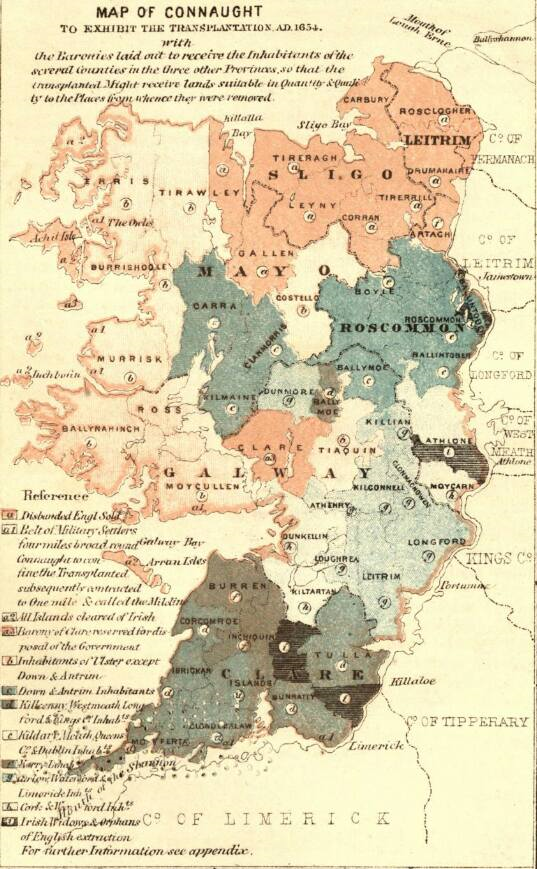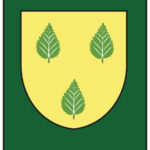 The Annalist
The Annalist
In 1624 Cú Coigcríche Ó Cléirigh began work on the hagiography of several Irish Saints having been employed by the Donegal Franciscans under the guidance of Fr Maurice Ultach. This was some two years before the return of his distant cousin Br Mícheál Ui Cléirigh from Louvain (Leuven) in the Spanish Netherlands.
Cú Coigcríche or Curgory was at this time the most senior member of the Uí Cléirigh clan who had served as Ollamhs to the ruling Uí Domhnaill clan since the 14th Century. Ollamhs, bards and file were considered as dangerous if not more dangerous to English rule as any Kerne or Gallowglass, giving resonance to the saying “the pen is mightier than the sword” They were to share the fate of their former employers the O’Donnells, by also being deprived of their lands.
The Plantation of Ulster
In these new circumstances members of the Uí Cléirigh clan tried to make the most of it. Many took tenancies on or near their former lands and we have the example of Flan O’Clery a cousin of Lughaidh’s, the last Ollamh to the O’Donnells, renting the townland of Foyagh in Drumhome parish from Trinity College in 1630. Muiris, a cousin of Flans’s and possibly a son of Lughaidh was leasing lands at Keran (Coolbeg) also from Trinity College.
According to O Donovan, “he (Cú Coigcríche) was the head of the Tirconnll sept of the O Clerys, and according to an Inquisition taken at Lifford, May 25, 1632, he held the half quarter of the lands of Coobeg and Doughill, in the proportion of Monarge, (near Killybegs) in the barony of Boylagh and Banagh, County Donegal, from Hollandtide, 1631, until May, 1632 for which he paid eight pounds sterling per annum to William Farrell esq., assignee to the Earl of Annandale ; but, as the Inquisition states, ‘ being a meere Irishman, and not of English or British descent or surname,’ he was dispossessed, and the lands became forfeited to the king.
In a strange twist to the plantation terms, grantees in portions assigned to Scottish or English patentees were obliged to remove the Irish (Gaels) from tenancies, whilst those strict terms were not required for church or college lands or lands held by servitors, (former army officers) thus many Gaels, including the O’Clerys, continued as significant lessors up until the beginning of the 18th Century. In Kilbarron, all of the parish was granted to Henry Ffolliott, as a Servitor, to Trinity College and to the Bishop of Raphoe. In fact the whole of the Barony of Tír Áoda (Tirhugh) was designated a special Government area.
In the Inquisition held in Liffer (Lifford) that Cú Coigcríche Uí Cleirigh, the Annalist, was leasing land near Killybegs in 1632. However “being a meere Irishman, and not of English or British descent or surname,’ he was dispossessed, and the lands became forfeited to the king.
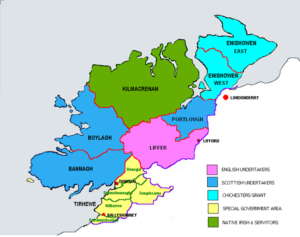 The Four Masters
The Four Masters
We also know that up until 1636 he was working along with his kinsmen Mícheál and Conaire Uí Cléirigh on the Annála Ríochta na hÉirinn later known as the Annals of the Four Masters. He is later recorded as appearing at an inquiry by the Franciscans in 1641 at a General Chapter of the Franciscans held in Multyfarnham in County Westmeath. Fearfeasa Uí Maoil Conaire and Cú Coigcríche Uí Cleirigh were summoned to attend to defend their work on the “Annála Riochta Na hEirinn” or the Annals of the Kingdom of Ireland against the accusations of Br Tuileagna Uí Maoil Conaire, a distant cousin of Fearfeasa. Later in 1646 Fearfeasa wrote a testimony in support of their work to the Provincial of the Franciscans in the testimony he notes the death Br Mícheál Uí Cléirigh had died in Louvain in that year.
1641 Uprising
In 1641 rebellion broke out in Ulster led by Phelim O’Neill who held lands at Kinard (later known as Caledon) Many of the leaders of the rebellion were the sons of those who had taken the English side in the Nine Years War from 1593 to 1602 that had been rewarded for their opposition to Hugh O’Neill and the other Gaelic chieftains. Owen Roe O’Neill returned from the Spanish Netherlands in June 1642 to lead the rapidly gathering Gaelic army of Ulster. The war continued on sporadically for the following eleven years and during this time we know nothing of Cú Coigcríche Uí Cléirigh.
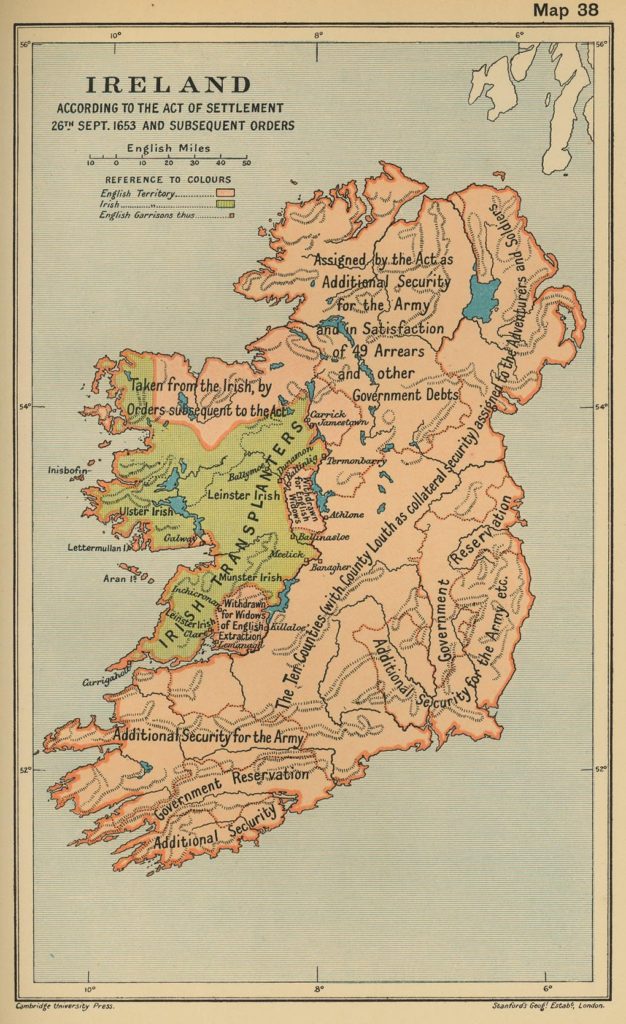
“To Hell or Connacht”
We next hear about him when he and his family are travelling with Colonel Manus O’Donnell and a number of Gaelic noble families south to Co Mayo as part of the expulsion of the landholding Gaelic families from Ulster in the event known as the Cromwellian settlement with the offer of “to Hell or Connacht”. His father, Colonel Rory O’Donnell was the grandson of Niall Garbh Uí Domhnaill who was imprisoned in the Tower of London alongside his son Neachtáin and who died there in 1626. Col Rory was the founder of the O’Donnel’s of Newport, Co Mayo branch of the clan.
The Ulster Gaels were granted lands in the Barony of Erris in the area between Newport and Belmullet.
Cú Coigcríche Uí Cléirigh and his family along with others from Tír Conaill settled in Doona on the coastal plain between the sea and Ballycroy in Co Mayo This area had been the fiefdom of Granuaile, Gráinne Ní Mháille and the Uí Máille’s had a castle situated at Doona.
When John O’Donovan visited the area in the 1830s he was told that “Ballycroy and Ballymonnelly (an adjacent district) were colonized by tribes from Tirconnell about two centuries ago Ballycroy was colonized by several families from the same county, who settled under O’Donnell”; and adds, “the principal surnames among them are M’Sweeny, O’Clery, O’Gallagher, Conway, MacManamon, and O’Friel. These still speak the Ultonian dialect of the Irish, and are called by their neighbours na A Ultaigh, i.e. the Ulstermen.” The colonists are said, by tradition, to have come to the district by sea, and to have landed at Fahy, near Doona Castle”.
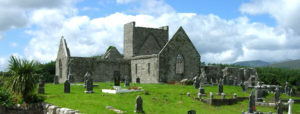
The Butlers
This part of Mayo been conquered by the Anglo- Norman family of De Burgo in the 13th Century. They rewarded their kinsmen and followers with portions of the conquered lands.
“John Botiller, his son or brother, took part in the invasion of Connaught, in 1235-1238, and received his reward in the west of Mayo. In 1281 a John Butler held the manor of Ballycroy in Mayo of John d’Exeter by knight service. Henry Butler is found as lord of Umhall (“the Owles”) in 1238. Here the family founded a borough (burgris) hence the name Burrishoole. (Journal of the Galway Archaeological and Historical Society 1932)
This branch of the Butlers were kinsmen of the Butlers of Ormond. When the line died out in the 14th century, the land was bequeathed to the then Earl of Ormond. With the Gaelic resurgence in the 14th Century this coastal area reverted to the UíMáille clan but with the extension of Tudor rule in Connacht the Earls of Ormond took up their family’s claim to these lands and the manor of Ballycroy was granted to him in 1585.

In 1650 James Butler, Duke of Ormond, Lord Lieutenant of Ireland who was an ardent Royalist and who had led the fight, firstly against the Catholic Confederation from 1641 to 1647 and latterly led the war against the Cromwellian forces from 1647 to 1650, left Ireland to join with the exiled Charles Stuart, later Charles II.
His extensive lands were confiscated by the Parliamentary government of Oliver Cromwell and distributed to ex-parliamentary army officers. If not intended, it is ironic that the Butler lands of Mayo were reserved for the dispossessed Gaelic landowners of Ulster who arrived in 1652. Whether or not these immigrants from Ulster were accepted by the people in the locality is questionable.
Na hUltaigh
In a survey of the Ballycroy district called the “Ethnography of Ballycroy” carried out in 1898 by Charles R. Browne, he noted that these people were still referred to as being “na hUltaigh” that they spoke a different dialect of Irish and that kept themselves to themselves and intermarried between their own émigré group, this almost two hundred years later.
These “Ulaidh” might have had the same welcome in Mayo as the “ Reivers” clans of the Scottish English borders who were given the choice, so it is told, of the “sword, noose or Ireland” when they arrived in distant Fermanagh and Tyrone by the Gaelic natives! – regardless of the circumstances that brought them to where they were sent to!
In the same study by Charles R. Browne Ulster Gaelic names were noted as Cleary Uí Cléirigh, Conway, (originally perhaps MacNamee, MacConnmhaigh, a Tír Connaill clan who were poets and ollamhs to the O’Neills) O’ Boyle (Uí Baoill) Sweeney (MacSuibhne) and McMenamom and other names that may be more associated with Fermanagh and Leitrim such as Maguire(Mag Uidhir) Corrigan (Uí Corragáin) McGowan (MacGabhain).and others too.
In the years afterwards CúCoigcríche Uí Cléirigh continued to add entries into the Uí Cléirigh Book Genealogy (preserved in the Royal Irish Academy), write poetry and one of the last before his death was an eulogy on the death of Máire, Aodh Ruaidh Uí Domhnaill’s last surviving sibling.
Cúchoigcriche O Cléirigh mac Diarmada do rinne so ag éccaoine imtheachta chloinne Aodh Mhic Maghnusa agus go háiridhe Máire duine ar deidhionaigh do écc don cloinne sin.
Cúchoigcriche O Cléirigh son of Diarmaid composed this, lamenting the death of the children of Manus (O’Donnell) Aodh (Ruaidh) and particularly Mary, who was the last of that family to die.(National Library MS 167,284)
It is believed that CúCoigcríche Uí Cléirigh died sometime around 1666.
Royal Irish Academy
In the Uí Cléirigh Book of Genealogy, purchased by the Royal Irish Academy in 1830 under the direction of George Petrie, was found CúCoigcríche’s will dated 1664. The will is incomplete having been damaged by being pasted into the book. It states
bringing with him the Leabhar Gabhala, the Book of Genealogies, the Life of Hugh Roe O Donnell, and the Topographical Poems of O Dugan and O Heerin, all in the handwriting of his ancestor Cii Choigcriche, the annalist.
One of the books purchased by the Royal Irish Academy in 1830 under the supervision of George Petrie was the Uí Cléirigh Book of Genealogy which was in the handwriting of CúCoigcríche Uí Cleirigh and compiled by him sometime before 1666. When the book was examined, inside it and pasted to one of the pages was Cú Coigcríche’s will. The document dated 1664 was worn and parts illegible but it stated,
“I bequeath the property most dear to me that ever I possessed in this world, namely, my books, to my two sons, Dermot and John. Let them copy from them without injuring them, whatever may be necessary for their purpose, and let them be equally seen and used by the children of my brother Carbry as by themselves. In the introduction to the Annals of the Four Masters John O’ Donovan stated that Cú Coigcríche
“Carried with him his books, which were his chief treasure ; these he bequeathed to his two sons, Diarmait and Sean, as we learn from his autograph will, which was written in Irish at Cur-na-hEilite, near Burrishoole, in the county of Mayo, ‘ and which is still extant, in rather bad preservation, in his genealogical manuscript, now in the Library of the Royal Irish Academy”
In an obituary notice in the Drogheda Argus of January 16, 1847, the following message was printed: ‘ On Monday, 28th December, 1846, at 10 Hamilton-row, Dublin, John O’Clery, the representative of the branch of his name, aged 72 years. He was the son of Patrick, son of Cosnamhach, son of Cairbre, son of Diarmid, son of Cucogry O’ Clery, one of the Four Masters who died in 1664.
John O’Clery came to Dublin from Drung Co Cavan, (situated between Cavan and Coothill) in 1817 bringing with him many books some of them belonging to his ancestor Cú Coigcríche Uí Cléirigh.
These included the Leabhar Gabhala, (Book of Invasions) the Uí Cléirigh book of Genealogies, Beatha Aodha Ruaidh Uí Dhomhnaill (The Life of Hugh Roe O’Donnell), and the Topographical Poems of O’Dugan and O’Heerin.
Sometime afterwards John O’Clery loaned, as stated by his son in a letter sent to John O’Donovan in 1842, the books to Edward O’Reilly, a Gaelic scholar and bookseller, which were subsequently never returned. When Edward O’Reilly died in 1830 his entire collection was sold in auction and the Royal Irish Academy under the guidance of George Petrie bought the books listed above. Whether John O’Clery loaned or sold these priceless manuscripts to Edward O’Reilly is unknown but it ultimately must be regarded as good fortune that these books were brought into the public domain by their purchase by the RIA.
Pasted to one of the pages in the Book of Genealogy was the last will and testament of Cú Coigcríche Uí Cléirigh written in Irish in 1664. Although from age and wear and tear, parts of the will were illegible, the following was stated that he was living at Cur-na-hEilite, near Burrishoole, in the county of Mayo. It also stated that
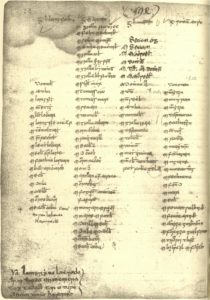
“Faigbhaim an mhaoin dob annsa liom dar chuires am sheilbh isin saoghal (mar at a mo leabhair) ag mo dhias mac, Diarmaid, agus Seaan. Benaid a ttarbha eistibh gan milleadh do reir a riachtanais, agus tabhraid a radharc agus a ngnathughadh do chloinn Cairbre mar iad fein”.
“I bequeath the property most dear to me that ever I possessed in this world, namely, my books, to my two sons, Dermot and John. Let them copy from them without injuring them, whatever may be necessary for their purpose, and let them be equally seen and used by the children of my brother Carbry as by themselves.”
Although the senior descendants of Cú Coigcríche moved firstly to Drung in Co Cavan and later to Dublin where the last known descendant of that line, the John O’Clery who wrote the letter to John O’Donovan. died in 1852. However many other of Cú Coigcríche’s descendants and those of his brother Cairbre continued to live in or around Ballycroy in Co Mayo.


